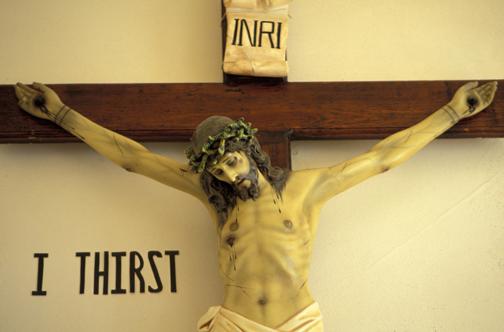Seven Last Words of Christ

THE SIETE PALABRAS, or meditation on the Seven Last Words of Our Lord Jesus Christ as he was dying on the Cross, is a tradition that is dear to our faithful. Seven highly-attended sermons are usually preached in our churches, beginning at noon of Good Friday up to three in the afternoon, the hour of Our Lord’s demise, to commemorate his final moments while dwelling on his parting words. Unfortunately, a good number of those who attend would not take part in the Celebration of the Lord’s Passion.
Thus, this new guide for meditating on the Seven Last Words, aims to respond to the call of the Second Vatican Council that popular devotions “should be drawn up so that they harmonize with the liturgical seasons, accord with the sacred liturgy, are in some way derived from it, and lead people to it, since in fact the liturgy by its very nature is far more superior to any of them.” (Sacrosanctum Concilium, no. 13)
Intended primarily as an aid for preachers, but also as a guide directed to those who would make these pious meditations in private, it uses mystagogy or the exposition of the mysteries of the faith through the signs and symbols of the sacred liturgy. This method of preaching is traditionally employed for the newly baptized as they are invited to deepen their knowledge of the faith through the celebration of the liturgy. Hence, by drawing a connection between this devotional exercise and the liturgical celebration that it actually precedes, it is hoped that the liturgy will shed greater light on our devotion and our devotion will then be able to lead us to a “full, conscious and active participation” (SC, no. 14) in the liturgy, so ardently envisioned and insisted by the same Council.
Because it is only a guide, it should be by no means a substitute to preachers and faithful, meditating on and praying about both the words and the liturgy themselves, allowing the Word to speak directly to them in their present circumstances, as communities and individuals. Prayers taken from the liturgical texts are given at the end of each meditation only as a springboard for personal prayer.
At last, standing ourselves by the Cross like John, we may also be able to witness, not only in preaching by also in deeds, to God’s Word of Love uttered most clearly and visibly in the supreme sacrifice of Jesus Christ:
What was from the beginning, what we have heard, what we have seen with our eyes, what we looked upon and touched with our hands concerns the Word of life--for the life was made visible; we have seen it and testify to it and proclaim to you the eternal life that was with the Father and was made visible to us. (1 John 1: 1-2)
The Stations of the Cross we use at San Jose Seminary, which I composed three years ago:
Following Jesus: A Way of the Cross for Priests and Seminarians


0 Comments:
Post a Comment
Subscribe to Post Comments [Atom]
<< Home